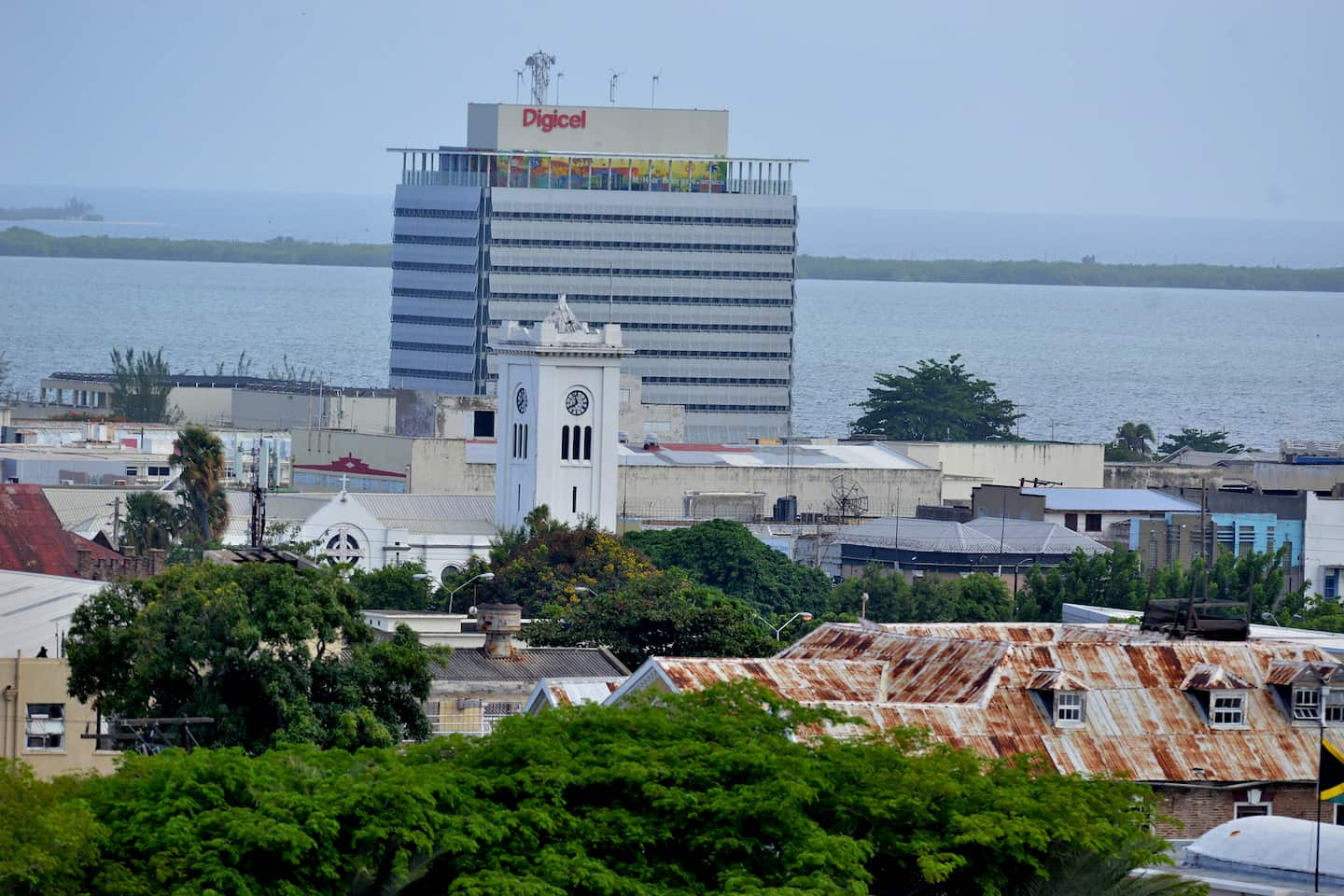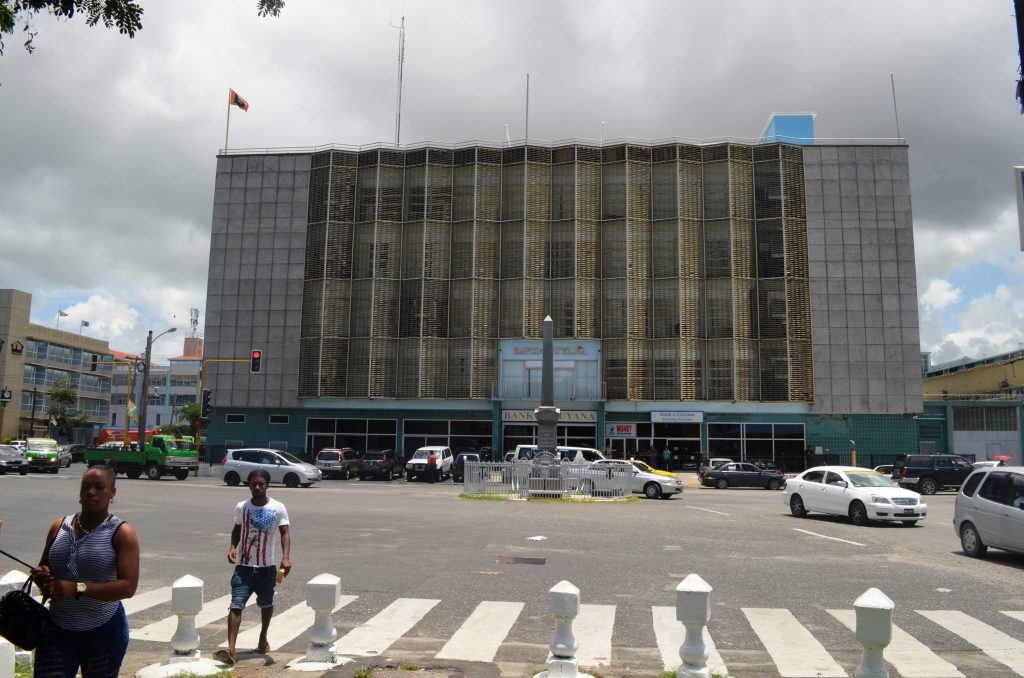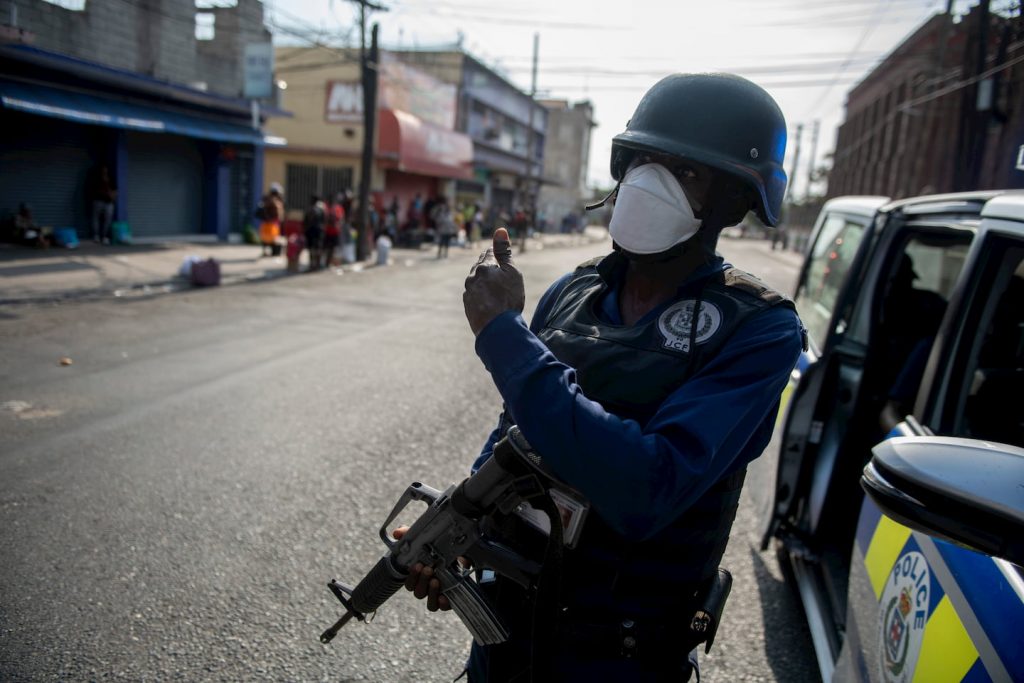Kingston became Jamaica’s commercial capital after Port Royal was destroyed by an earthquake in 1692, and was granted city status in 1703. By 1775, Jamaica had become the “brightest jewel” in Britain’s Imperial Crown, exporting some 50 per cent of the cane sugar imported by England and Wales. That same year, the Port of Kingston deployed 639 vessels in extensive international trade with Europe, Africa, North America and the other Caribbean colonies. The prosperity of Kingston created a small group of extremely wealthy merchants, who, over time, moved from Harbour Street to their newly built imposing houses north of the Parade. The enslaved remained concentrated in the Negro yards, located in the lanes south of the Parade, where they and their families lived in 10-foot square thatched huts with earthen floors. The lack of water, together with the disposal of excreta in open trenches along the roadways, created an environment of unmitigated squalor.
Public Health
For the poor in Kingston, the lack of public healthcare was a major challenge. In 1776, Kingston Public Hospital was built to provide the white population with an almshouse for the poor and infirm, as well as an asylum for lunatics. Blacks were only admitted after Emancipation in 1838. However, up to 1850, the hospital provided little healthcare. “The nurses at the institution … also worked as field labourers on a part-time basis … and some were described as common drunks who often robbed the patients of their food and extras.” The mortality rate was extremely high, and in one year (1840), of the 44 blacks admitted, 39 died.
Tuberculosis, yaws and leprosy were all on the Increase, and the situation became even more desperate with the outbreak of a cholera pandemic in 1850, which wiped out one-tenth of the population of the island. In the city, the mortality rate was even higher. From a single house on Harbour Street, “nine corpses were carried out in 36 hours”. It was not until 1872 that the city was provided with filtered water; and in 1895, a street sewerage system was installed.
Despite these improvements, the poor continued to suffer from the lack of healthcare. In 1937, tuberculosis, yaws, venereal disease and hookworm were still prevalent. That year, the schools’ medical officer for Kingston reported that “an examination of 12,000 children revealed a 28.7 per cent rate of subnormal nutrition”.
With the introduction of governments elected by universal adult suffrage in 1944, a Ministry of Health and Housing was established, and in the 75 years since, successive administrations have made vast improvements in healthcare delivery compared to three centuries of British colonial administration. However, today, even with these improvements, the poor in the capital city are yet to have access to quality healthcare.
Growth of Squatter Communities
With the passage of the British Sugar Duties Act of 1846, which ushered in the era of free trade for the Caribbean, Jamaica’s sugar no longer enjoyed a preferential price in the British market, which was soon flooded with cane sugar from Brazil, Cuba and Louisiana, as well as beet sugar from Europe. Jamaica’s ailing sugar industry now virtually collapsed as production dropped from some 20 per cent of the world’s cane sugar in 1820 to less than two per cent after the Sugar Duties Act took effect in 1854.
With the collapse of the sugar industry, life grew harder for the landless in rural Jamaica, and migration to the capital city began in earnest in search of employment. Many of these job seekers ended up in the growing slums of central and western Kingston. By 1842, the Kingston magistrate was complaining of the rapid growth in crime, and the custos referred to his city as “the meeting ground of labourers who had deserted, criminals, lepers, the disease-ridden, and the unemployed”.
As rural-urban migration increased, so did the ranks of the poor and unemployed in the city. Slum life became the norm, with the largest slums located in Back O’ Wall and Dungle in Kingston Pen, and Trench Pen in lower St Andrew. Here, single room huts with a dirt floor were constructed from cardboard and wooden barrels. As many as 1,000 people shared a standpipe in Trench Town, and on the Dungle, where the city’s rubbish was dumped, squatters eagerly awaited the arrival of garbage to rummage through the contents.
Squatter communities still continue to proliferate in urban Kingston and St Andrew, and the Riverton garbage disposal site has replaced Dungle as the source of food and building materials for the poor of the city.
Wages, Unemployment and Underemployment
By 1935, unemployment and underemployment in the city had reached crisis proportions. Official estimates for 1937 indicated that 11 per cent of the wage earners in a family were permanently unemployed and another 50 per cent only worked intermittently.
One hundred years after Emancipation in 1838, wages remained unchanged. In 1935, the official estimate was that 71 per cent of those employed received an average income of 14 shillings per week. However, the cost of living had certainly increased, particularly on the staples of the poor and working class. Between 1840 and 1865, the tax on herrings rose 166 per cent, on salt fish 366 per cent, and on mackerel, 433 per cent.
Nightmare of the Political Garrison
Finally, in 1961, the dream of planned urban development for Kingston Pen came close to realisation when Norman Manley held discussions in Washington to finalise a “programme to reclaim and subdivide swamp land in Western Kingston for industrial and commercial purposes … .” These discussions also “laid the foundations for all the plans for housing in West Kingston”. This programme was announced in February 1962, but was rescinded in April 1962 by the newly elected JLP administration.
As a result the dream of development became a nightmare for the poor in Kingston Pen with the ruthless bulldozing of the predominantly PNP squatter communities of Dungle in 1963, and Back o’ Wall in 1966 by the JLP administration to make way for the construction of the housing scheme that became Tivoli Gardens.
The forced evacuation of the 4,000 PNP supporters whose shacks had been destroyed by bulldozers left them shelterless until they were able to establish informal squatter settlements elsewhere in the city. The decision by Member of Parliament Edward Seaga to allocate the new houses exclusively to JLP supporters was the first step in the creation of a political garrison at Tivoli Gardens, and set the stage for the partisan political warfare in which the poor were conscripted into paramilitary units. In the process, the gun became the weapon of choice as the number of casualties by firearms increased from 37 in 1962 to 206 in 1969.
Education
The education of the children of the poor remains the major casualty in the inner cities dominated by political warfare and crime; and without quality education and training there is no escape from poverty.
A survey conducted in 2017 showed that the five worst-performing high schools in Kingston and lower St Andrew are located in the communities where poverty is most entrenched. These were Haile Selassie High School in Trench Town, where only 2.7 per cent passed five subjects with English and/or mathematics; Trench Town, 0.8 per cent; Denham Town High, 1.7 per cent; Penwood High, 2.6 per cent.
What are the prospects for the economic and social transformation that the city so urgently to reduce poverty? Leader of the Opposition, Dr Peter Phillips, has announced the establishment of three commissions to develop new policies for the transformation of education and training; the expansion of ownership and economic opportunity at the base of the society; and a legal and state-supported pathway for squatters to become homeowners. The reports from these commissions must become the subject of national consultations and lead to bipartisan consensus if a far-reaching vision of social and economic transformation is to be realized.
In the meantime, the 30 per cent increase in the poverty rate in the Kingston Metropolitan Region in 2017 (Jamaica Survey of Living Conditions) is the clearest indicator that poverty is being entrenched in the capital city and the threat of anarchy looms even larger.







